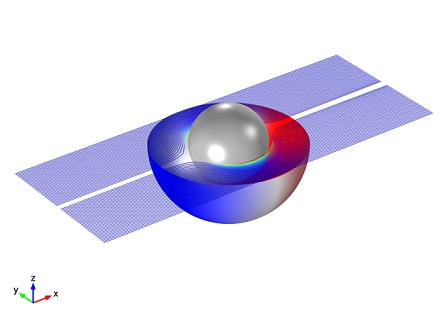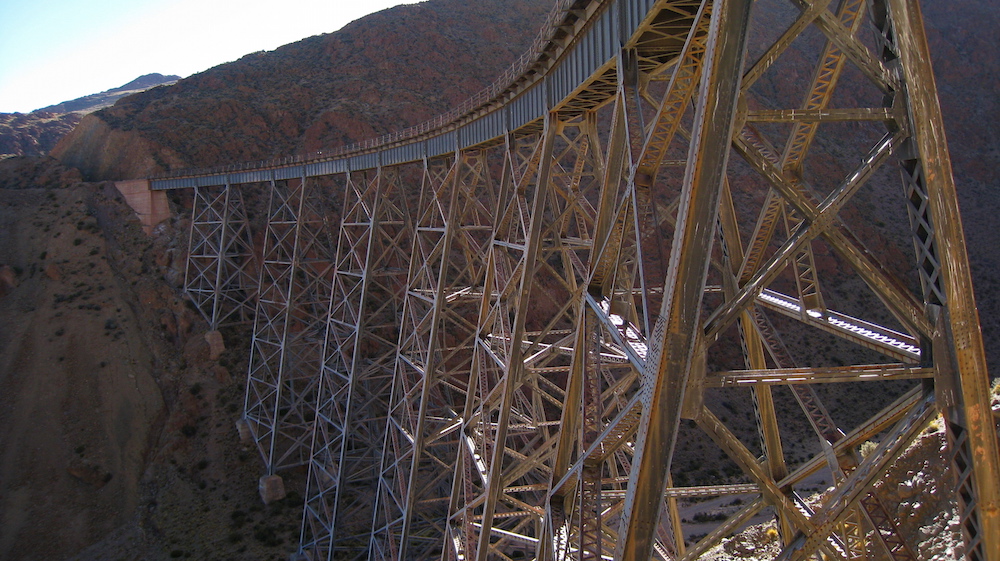
A team of researchers from the Karlsruhe Institute of Technology in Germany has figured out a new simple mathematical technique for designing mechanical cloaks. This type of cloaking has great potential for practical uses, such as protecting buildings from earthquake damage for example.
A Short Introduction to Metamaterials and Cloaking
We have been interested in cloaking for years and have covered this topic in various ways in previous blog posts. Although there are many different types of cloaking, one common theme is how complex the phenomenon is to achieve mathematically (and physically…).

An ideal cloak, which is modeled as a spherical shell with a smaller sphere inside. In this optical cloaking example, light waves bend around the smaller sphere, causing it to seem invisible.
The concept starts withmetamaterials. Metamaterials are artificial materials that depend on a certain structure and arrangement to work.Cloakingdevices use these metamaterials to bend waves (such as thermal, electromagnetic, acoustic, and mechanical waves) around an object in order to hide or protect it.
Theoretically, different cloaking devices can perform different functions. For instance, electromagnetic cloaking can render things invisible from the human eye, while mechanical cloaking can hide an object from mechanical vibrations and stress. In reality, it’s not a simple task to cloak something — and this is especially true in structural mechanics. However, researchers are taking leaps forward in the realm of cloaking design.
For instance, you might recall reading aboutcloaking advancements for flexural waves in Kirchhoff-Love plateshere on the COMSOL Blog. The research group that led this study overcame limitations that were previously associated with the cloaking of mechanical waves in elastic plates. They created a new theoretical framework for designing and building these invisibility cloaks and used COMSOL Multiphysics software to simulate and analyze the quality of their cloak.
More recently, researchers at the Karlsruhe Institute of Technology in Germany developed avery simple mathematical approach to cloakingbased on a direct lattice transformation technique.
A New Mechanical Cloaking Technique
The team of scientists began by considering a 2D discrete lattice comprised of one material. Initially, an electrical analogy was studied, in which the lattice points within this structure were connected by resistors. These resistors were designed to act as a metamaterial, bending the electromagnetic waves and creating a cloak.
In the direct lattice approach, the lattice points of the structure were subjected to a coordinate transformation and the properties of the resistors were kept the same. Because the resistors and the connections between them were the same, the hole in the middle of the lattice and the distortion surrounding it could not be detected from the outside. Thus, in just one simple step, a cloak was successfully created.
The research team’s initial findings demonstrated the success of this simple and straightforward technique for cloaking in heat conduction, particle diffusion, electrostatics, and magnetostatics. Then, by replacing the resistors in the lattice structure with linear Hooke’s springs, the researchers found that their transformation approach was successful in cloaking elastic-solids as well.
To visualize and test the performance of the lattice-transformation cloak, the researchers used COMSOL Multiphysics simulation software. In the simulations, constant pressure was exerted onto the structure and the resulting strain was analyzed. The direct lattice approach was found to result in less error and less strain under various loading conditions — an indicator of very good performance.
Looking Forward to Potential Use Cases
Although mathematicallyperfectcloaking will never exist in reality, mechanical cloaking still has a lot of potential uses in the civil engineering and automotive industries. Using this technique, engineers could create strong materials that maintain their strength and durability, even when forming complex shapes. Constructing buildings of such material would help protect them from earthquake damage, for instance.

Civil engineers could use mechanical cloaking to design support structures for bridges. (By Alicia Nijdam. Licensed underCreative Commons Attribution 2.0 Generic, viaWikimedia Commons).
With mechanical cloaking, we could also see complex yet lightweight architecture, carbon-enforced cars, and tunnels with better stress protection in the future. Check out the links below for more information about this fascinating topic.
Further Reading
- Read more about theKarlsruhe Institute of Technology team’s mechanical cloaking techniquefromPhys.org
- Learn howfractalscontribute to the magic of metamaterials
- Can youprint an invisibility cloak with a 3D printer?
- Cloaking in science and fiction



Comments (1)
Gabriele D'annunzio
November 24, 2018Hi @Caty Fairclough, i’m studying the paper mentionated here and i would ask to you if you have got the Comsol codes with which Martin Wegner & co. have done their simulation. Thanks a lot, i need it for my studies. Cheers.